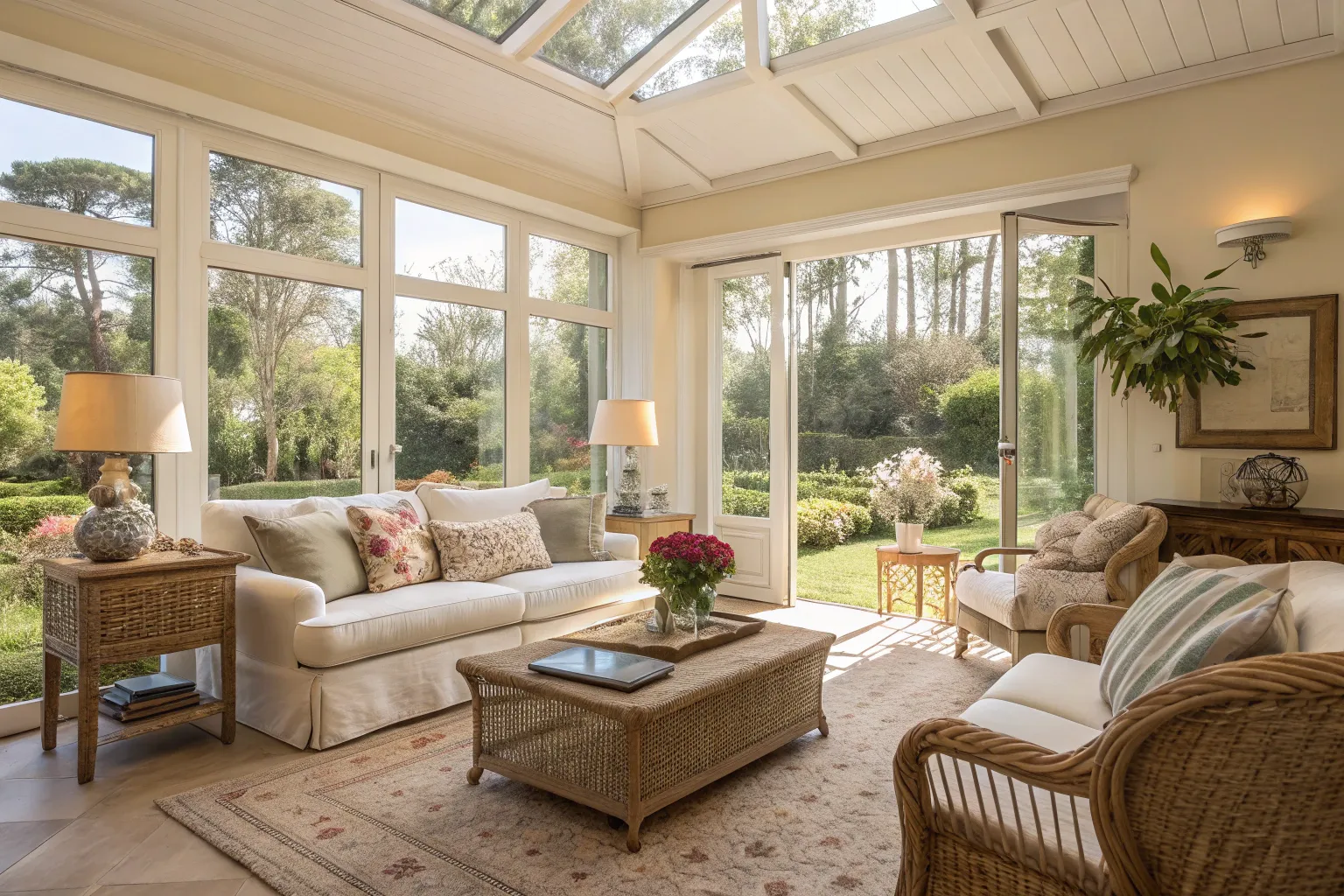There’s a paradox many homeowners face: you want your space to feel fresh and inspiring, but the thought of another decorating project fills you with dread. This fatigue isn’t a character flaw—it’s a natural response to the overwhelming choices, endless Pinterest boards, and constant pressure to create picture-perfect spaces.
Understanding Decoration Fatigue
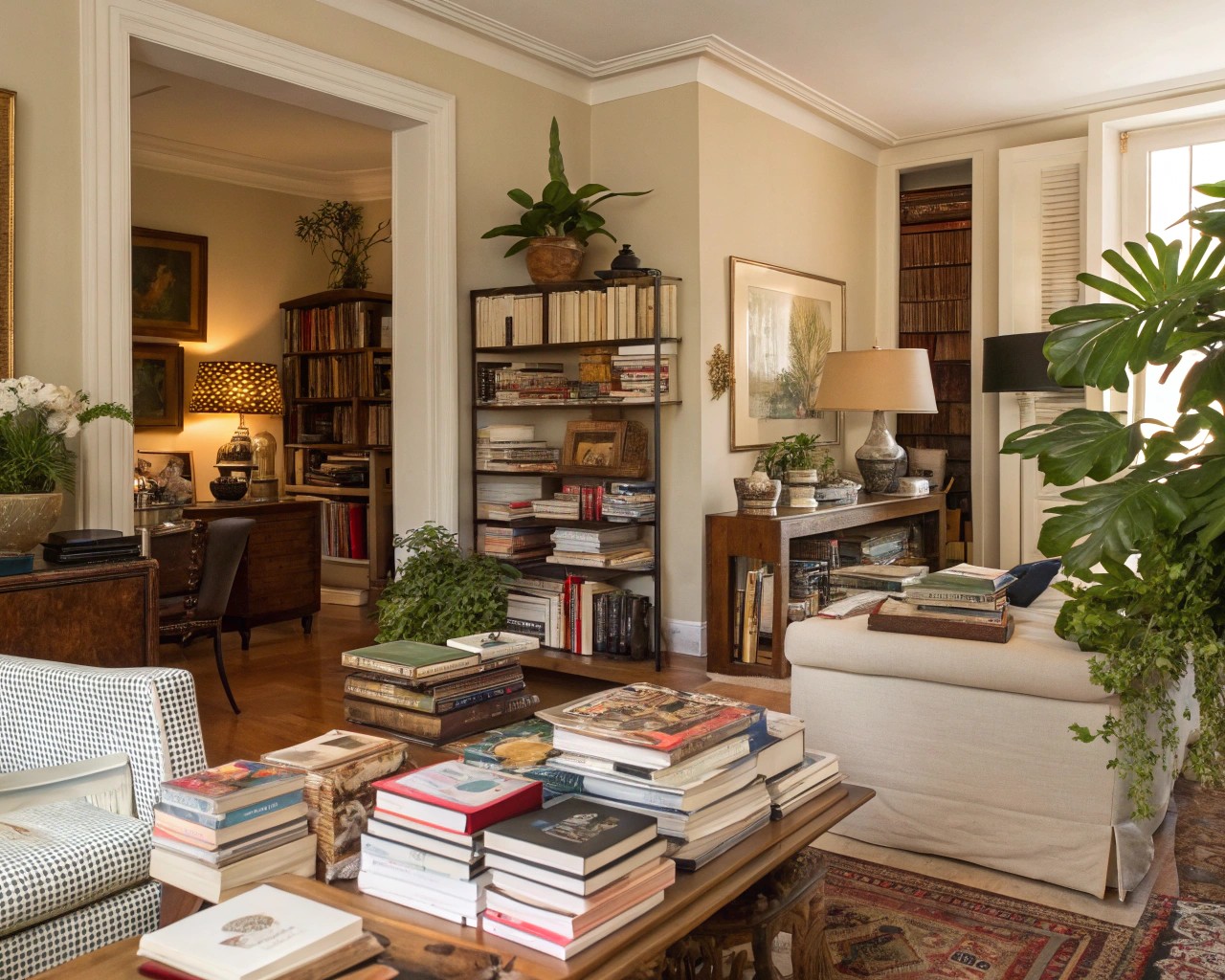
What is Decoration Fatigue?
Decoration fatigue manifests as a state of physical and mental exhaustion when the demands of designing and updating your home constantly exceed your available energy. It’s characterized by decision paralysis, where simple choices like selecting paint colors or choosing furniture feel overwhelming.
This phenomenon often intensifies around the 75% mark of any decorating project, just when you think you’re nearing completion. The initial excitement wanes, replaced by a sense that the finish line keeps moving further away. I’ve observed this pattern repeatedly in my practice—clients who start with enthusiasm gradually become overwhelmed by the sheer volume of decisions required.
Common Signs and Symptoms
- Decision paralysis: Inability to make even simple decorating choices
- Avoidance behaviors: Postponing or abandoning decorating projects
- Perfectionism anxiety: Fear of making the “wrong” choice
- Physical exhaustion: Feeling drained by the thought of decorating tasks
- Overwhelm from options: Feeling bombarded by too many design possibilities
Why It Happens
Several factors contribute to decoration fatigue:
| Factor | Description | Impact |
|---|---|---|
| Decision fatigue | Mental exhaustion from making too many choices | Reduced ability to make quality decisions |
| Social media overwhelm | Constant exposure to “perfect” spaces | Unrealistic expectations and comparison |
| Time constraints | Limited hours for decorating alongside other responsibilities | Increased stress and rushed decisions |
| Budget pressure | Financial constraints limiting options | Anxiety about making costly mistakes |
| Perfectionism | Need to get everything “just right” | Paralysis and inability to take action |
Alternative Approaches to Traditional Decorating
When traditional decorating feels overwhelming, shifting your approach can reignite your enthusiasm for your space. These strategies focus on minimal intervention while maximizing impact.
Minimal Intervention Strategies
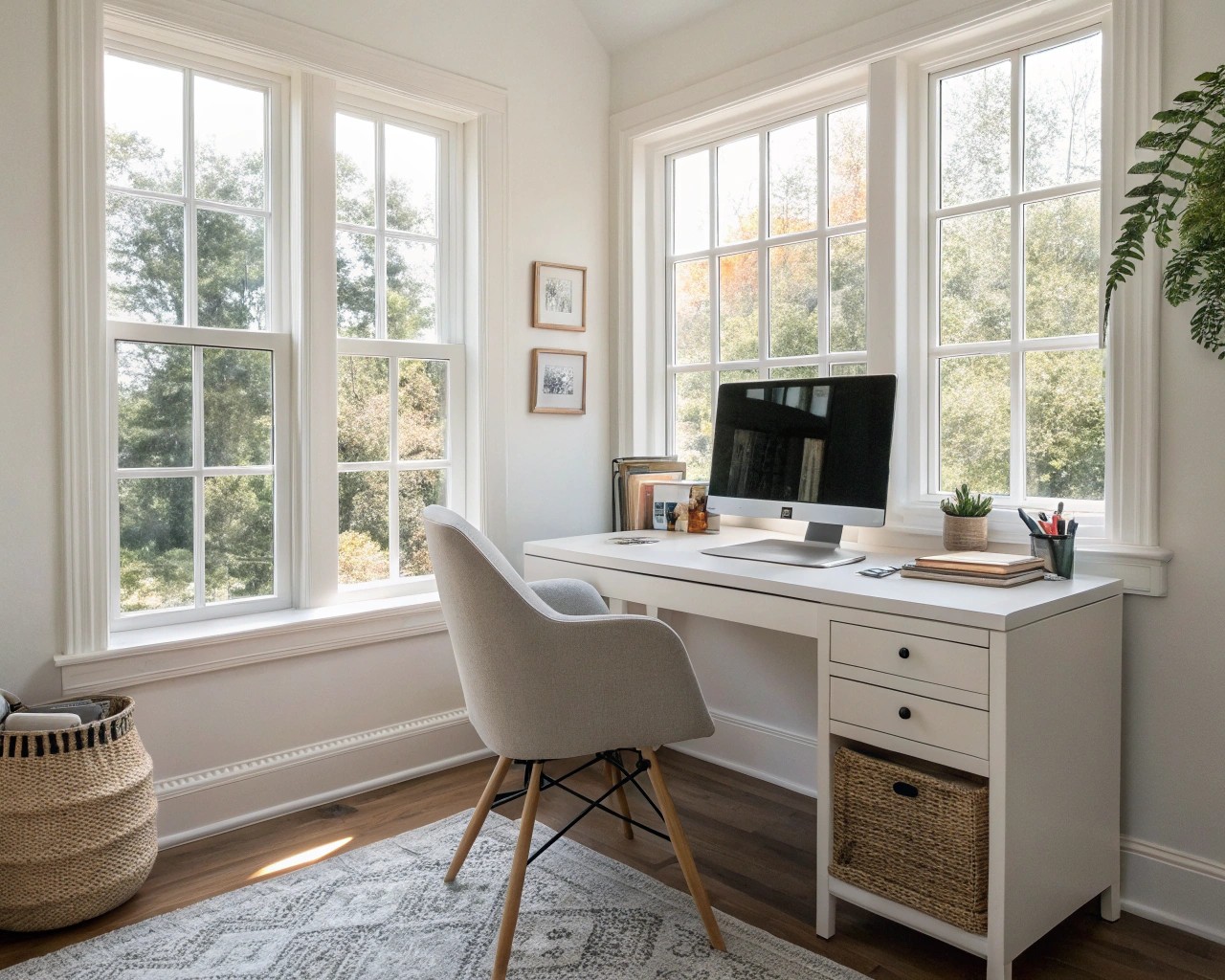
The 80/20 Rule for Spaces
Apply the principle that 80% of your satisfaction comes from 20% of your efforts. Focus on high-impact changes that require minimal energy:
- Lighting upgrades: Replace outdated fixtures or add table lamps
- Textile swaps: Change throw pillows, curtains, or rugs
- Plant additions: Introduce greenery for instant life
- Furniture rearrangement: Create new layouts without purchasing anything
Working with What You Have
Rather than constantly acquiring new items, consider these approaches:
- Seasonal rotation: Store some decor items and rotate them quarterly
- Room-to-room migration: Move pieces between spaces for fresh perspectives
- Repurposing: Use items for different functions than originally intended
- Layering: Add or remove layers of textiles and accessories
Focusing on Functionality Over Aesthetics
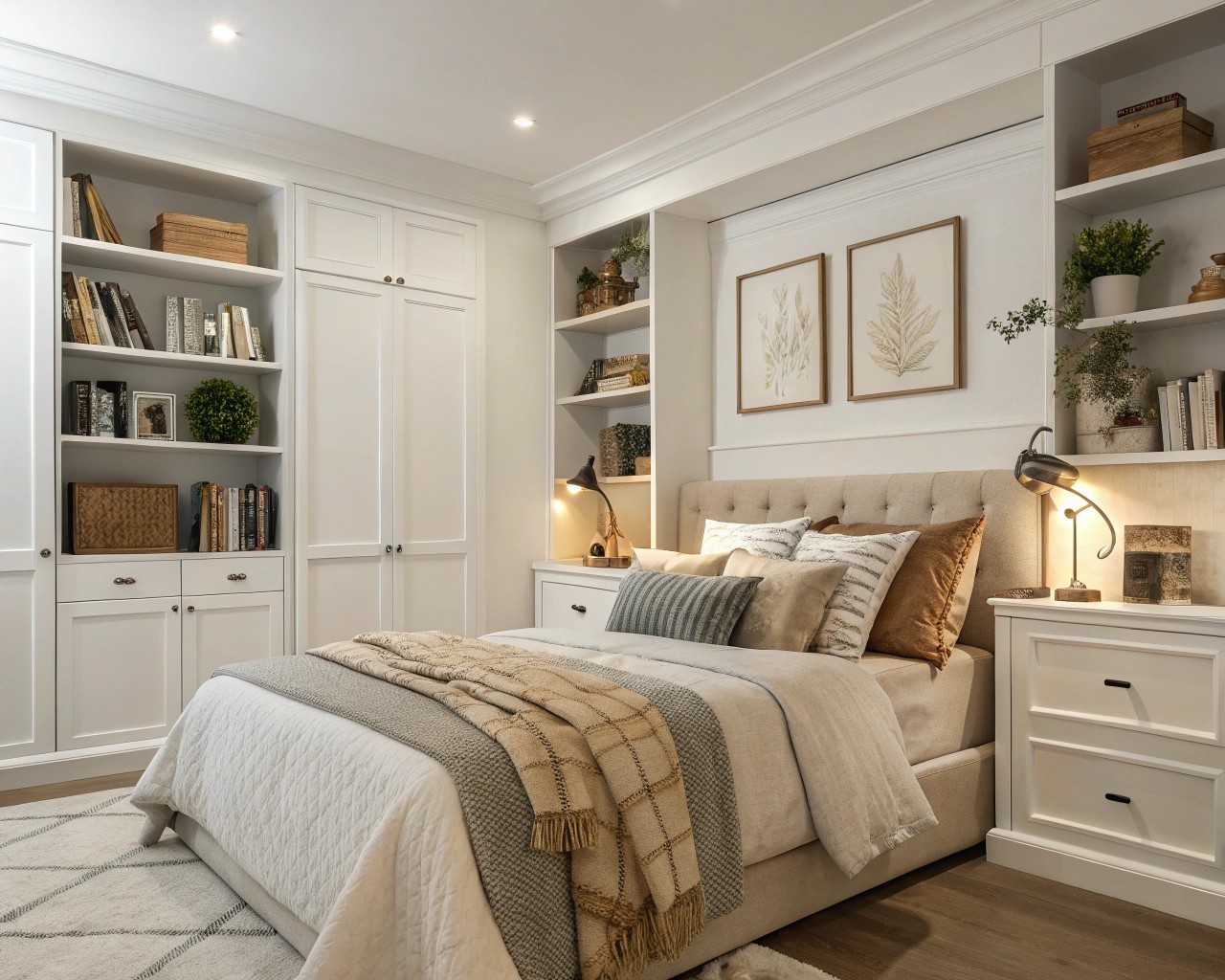
When decoration feels overwhelming, prioritize function. This approach reduces decision fatigue while improving your daily life:
Essential Function Areas
| Area | Functional Focus | Simple Solutions |
|---|---|---|
| Kitchen | Efficient storage and workflow | Add organizers, declutter counters |
| Bedroom | Restful sleep environment | Upgrade bedding, improve lighting |
| Living room | Comfortable gathering space | Arrange furniture for conversation |
| Bathroom | Clean, organized daily routine | Add storage, improve lighting |
Indoor Solutions for Decoration Fatigue
Low-Effort Room Refreshes
The Five-Minute Refresh
These quick changes can transform a room’s energy without major commitment:
- Declutter surfaces: Clear countertops, tables, and shelves
- Add fresh flowers: Bring in seasonal blooms or greenery
- Adjust lighting: Change bulb wattage or lamp positions
- Fluff and arrange: Reorganize pillows, throws, and accessories
- Open spaces: Pull back curtains, open windows for natural light
The Weekend Transformation
For those with slightly more energy, weekend projects offer satisfying results:
- Paint an accent wall: Focus on one wall rather than entire rooms
- Install floating shelves: Add storage and display opportunities
- Create a gallery wall: Arrange existing artwork or photos
- Upgrade hardware: Replace cabinet knobs and drawer pulls
- Add window treatments: Install or replace curtains and blinds
Staging and Styling Techniques
Professional staging principles can refresh your space without major renovations:
The Three-Item Rule
Group accessories in odd numbers (typically three) for visual balance:
- Height variation: Use items of different heights
- Texture mixing: Combine smooth, rough, and soft textures
- Color coordination: Choose items within your existing color palette
Creating Focal Points
Direct attention to specific areas rather than trying to perfect entire rooms:
- Mantel styling: Create seasonal vignettes on fireplace mantels
- Entryway focus: Style your front entrance for maximum impact
- Bedroom nightstands: Create symmetrical bedside arrangements
- Kitchen counters: Style one section while keeping others functional
Lighting and Textile Changes
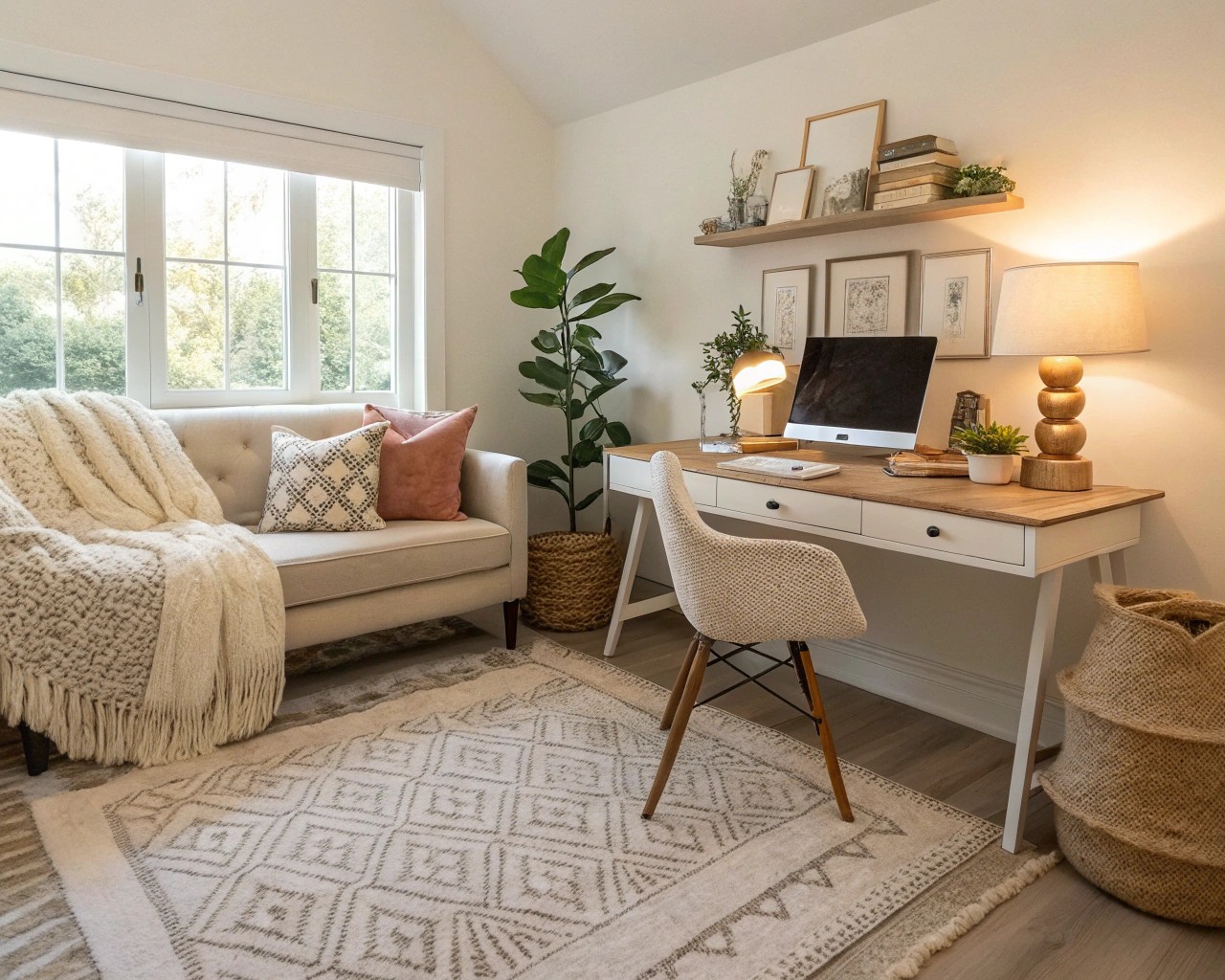
Lighting as Instant Transformation
Lighting changes offer the highest impact for minimal effort:
- Layer lighting sources: Combine overhead, task, and accent lighting
- Warm bulb temperatures: Use 2700K-3000K for cozy atmospheres
- Add dimmer switches: Control ambiance throughout the day
- Strategic lamp placement: Position lamps to eliminate dark corners
Textile Rotation System
Establish a seasonal textile rotation to maintain freshness:
Spring/Summer Textiles:
- Lightweight linens and cottons
- Bright, fresh colors
- Minimal layering
Fall/Winter Textiles:
- Wool and heavier fabrics
- Rich, warm colors
- Multiple texture layers
Outdoor Alternatives for Tired Decorators
Garden and Landscape Refresh Ideas
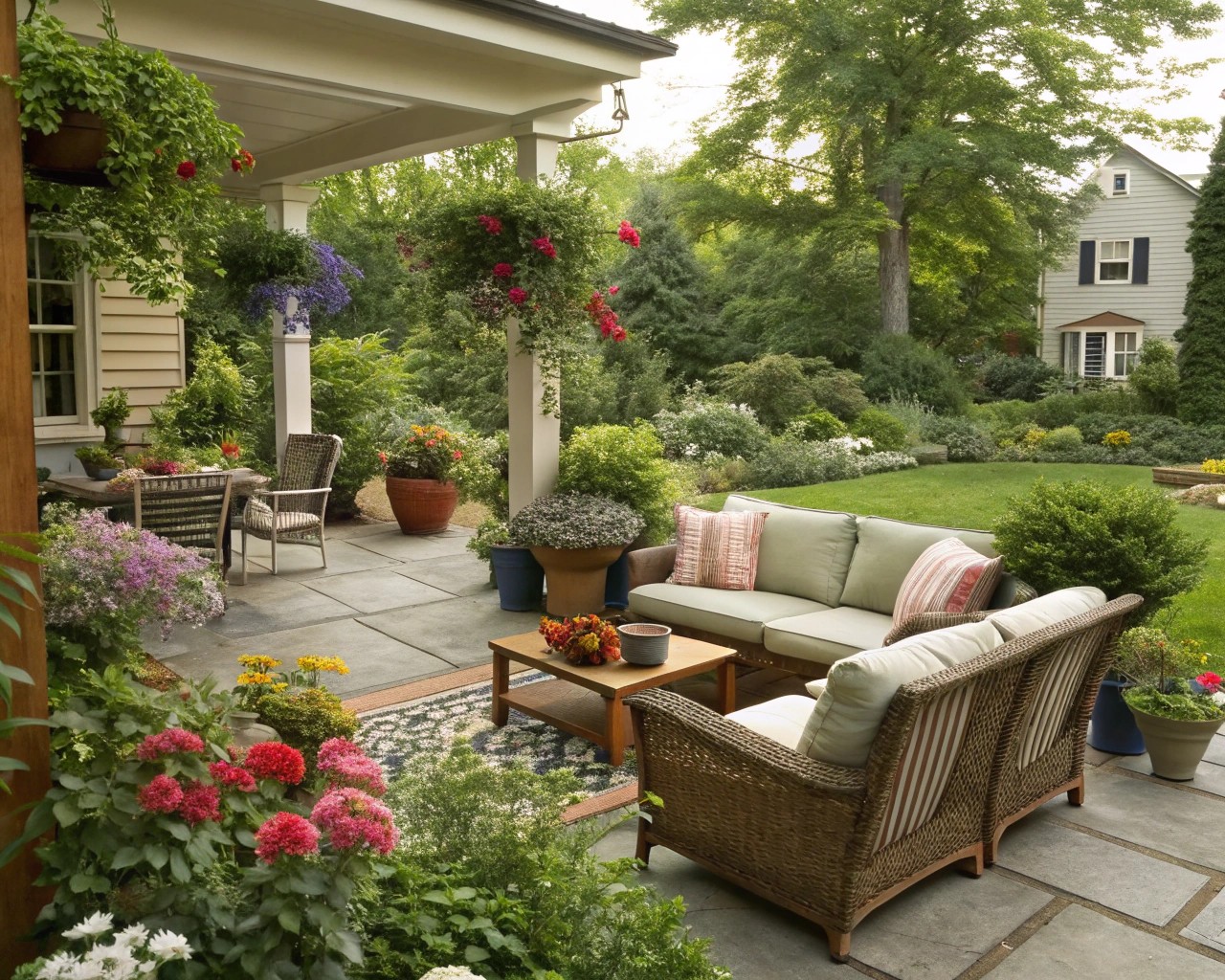
The Minimal Maintenance Approach
When outdoor decorating feels overwhelming, focus on these low-effort, high-impact strategies:
Seasonal Plant Additions
Rather than redesigning entire gardens, add seasonal color through strategic plantings:
- Spring: Plant bulbs in fall for spring blooms (tulips, daffodils)
- Summer: Add annual flowers in containers (petunias, marigolds)
- Fall: Incorporate mums and ornamental kale
- Winter: Use evergreen arrangements and winter berries
The Five-Step Garden Refresh
- Prune and tidy: Remove dead growth and shape existing plants
- Mulch refresh: Add fresh mulch around plants and beds
- Edge definition: Create or refresh garden bed edges
- Plant placement: Add one or two new plants strategically
- Lighting accent: Install solar pathway lights or string lights
Low-Maintenance Outdoor Spaces
Drought-Tolerant Solutions
For sustainable, low-maintenance outdoor spaces:
- Native plant selection: Choose plants adapted to your climate
- Xeriscaping principles: Design with minimal water requirements
- Hardscaping integration: Use stone pathways and decorative rocks
- Vertical growing: Install trellises and wall-mounted planters
Zone Creation Without Major Construction
Creating Distinct Outdoor Areas:
| Zone | Simple Definition Method | Materials Needed |
|---|---|---|
| Dining | Outdoor rug placement | Weather-resistant rug, furniture |
| Relaxation | Comfortable seating arrangement | Cushions, throws, side table |
| Garden | Raised planters or containers | Containers, soil, plants |
| Privacy | Screening plants or panels | Tall plants, decorative screens |
Seasonal Adaptations
Quarterly Refresh Strategy
Instead of constant maintenance, focus on seasonal transitions:
Spring (March-May)
– Clean and organize outdoor furniture
– Plant cool-season vegetables and flowers
– Refresh mulch and prune winter damage
Summer (June-August)
– Add shade elements (umbrellas, pergolas)
– Install water features or misters
– Focus on drought-tolerant plantings
Fall (September-November)
– Plant spring bulbs
– Harvest and preserve garden produce
– Prepare spaces for winter
Winter (December-February)
– Plan next year’s garden
– Maintain tools and equipment
– Focus on indoor plant care
Creative Non-Traditional Options
Alternative Decorating Activities
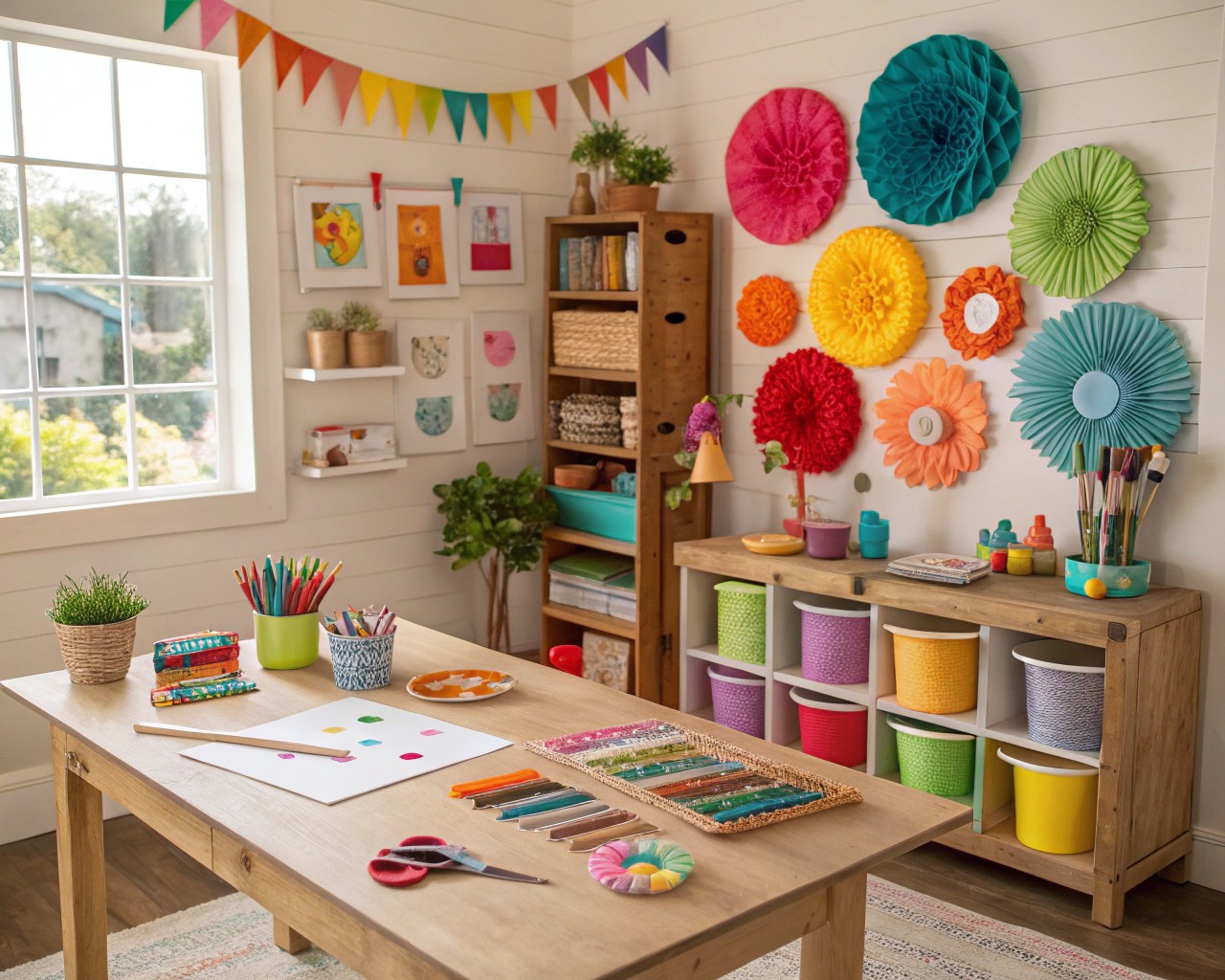
When traditional decorating feels exhausting, consider these engaging alternatives:
Functional Art Projects
Create items that serve dual purposes—beauty and utility:
- Painted storage containers: Transform plain boxes into decorative storage
- Embroidered dish towels: Add personal touches to functional items
- Decorated plant pots: Personalize containers for your plants
- Custom bookends: Create unique supports for your book collection
Seasonal Craft Projects
Engage in time-limited projects that change with the seasons:
- Pressed flower art: Create botanical displays from garden flowers
- Seasonal wreaths: Make door decorations that change quarterly
- Holiday centerpieces: Craft temporary table decorations
- Garland making: Create festive hangings for special occasions
Repurposing and Upcycling
The Art of Reimagining
Transform existing items rather than purchasing new ones:
Common Repurposing Projects:
| Original Item | New Purpose | Transformation Method |
|---|---|---|
| Old ladder | Bookshelf or plant stand | Clean, paint, add shelves |
| Vintage suitcase | Coffee table or storage | Add legs, clean interior |
| Mason jars | Bathroom organizers | Add labels, mount on wall |
| Picture frames | Serving trays | Remove glass, add handles |
| Wooden crates | Storage ottomans | Add cushions, wheels |
Upcycling Techniques
- Paint transformations: Change colors and finishes
- Hardware updates: Replace knobs, handles, and hinges
- Fabric applications: Add upholstery or fabric covers
- Aging techniques: Create vintage appearances
Functional Art Projects
Projects That Serve Multiple Purposes
- Jewelry organizers: Create wall-mounted displays for accessories
- Magnetic spice racks: Organize kitchen essentials artistically
- Photo memory boards: Display family pictures functionally
- Garden markers: Create beautiful plant identification signs
Practical Implementation Strategies
Step-by-Step Approaches
The 15-Minute Rule
Commit to just 15 minutes of decorating activity daily:
Week 1: Assessment
– Day 1-2: Identify problem areas
– Day 3-4: Gather inspiration (limit to 2 sources)
– Day 5-7: Make a simple priority list
Week 2: Small Actions
– Day 8-10: Declutter one area daily
– Day 11-12: Rearrange furniture in one room
– Day 13-14: Add one new element (plant, pillow, etc.)
The Project Pipeline
Maintain only three active projects at any time:
- One completing: Nearly finished project
- One in progress: Currently working on
- One planning: Future project in consideration
Budget Considerations
Cost-Effective Strategies
| Budget Level | Recommended Approaches | Expected Outcomes |
|---|---|---|
| $0-25 | Rearranging, decluttering, repurposing | Immediate space improvement |
| $25-100 | New textiles, plants, small accessories | Noticeable room refresh |
| $100-500 | Lighting upgrades, paint, larger accessories | Significant transformation |
| $500+ | Furniture pieces, professional consultation | Major room makeover |
Money-Saving Tips
- Seasonal shopping: Buy decor items at end-of-season clearances
- Thrift store hunting: Find unique pieces at fraction of retail cost
- DIY alternatives: Create custom pieces rather than purchasing
- Room swapping: Move items between rooms before buying new
Timeline Planning
Realistic Project Scheduling
Daily (5-15 minutes)
– Declutter one surface
– Rearrange accessories
– Add or remove one decorative element
Weekly (30-60 minutes)
– Clean and organize one area
– Try new furniture arrangements
– Add seasonal touches
Monthly (2-4 hours)
– Tackle one small project
– Assess and adjust room functionality
– Plan next month’s focus area
Seasonally (1-2 days)
– Deep clean and reorganize
– Switch out seasonal decor
– Evaluate and plan major changes
Maintenance and Sustainability
Long-Term Strategies
The Maintenance Mindset
Shift from constant renovation to thoughtful maintenance:
- Weekly tidying: Maintain organized spaces rather than recreating them
- Monthly assessments: Evaluate what’s working and what isn’t
- Quarterly refreshes: Make small seasonal adjustments
- Annual planning: Set realistic goals for the coming year
Creating Sustainable Systems
Storage Solutions That Work
- Designated homes: Every item has a specific place
- Seasonal rotation: Store out-of-season items systematically
- Easy maintenance: Choose systems you’ll actually use
- Label systems: Make organization sustainable for family members
Preventing Future Burnout
Sustainable Decorating Practices
- Limit inspiration sources: Choose 2-3 trusted sources instead of endless scrolling
- Set decision deadlines: Give yourself time limits for choices
- Embrace imperfection: Accept “good enough” over perfect
- Focus on function: Prioritize how spaces work over how they look
Warning Signs to Watch For
- Avoiding home improvement stores or websites
- Feeling overwhelmed by simple decor decisions
- Postponing necessary home maintenance
- Comparing your space negatively to others constantly
- Feeling guilty about unfinished projects
Seasonal Adaptations
The Quarterly Refresh System
Spring Focus
– Deep cleaning and decluttering
– Adding fresh plants and flowers
– Lighter textiles and brighter colors
Summer Emphasis
– Outdoor space optimization
– Natural light maximization
– Cooling elements and breezy fabrics
Fall Preparation
– Cozy textile layering
– Warm lighting adjustments
– Harvest and nature-inspired elements
Winter Comfort
– Maximum coziness and warmth
– Intimate lighting schemes
– Indoor plant care and maintenance

